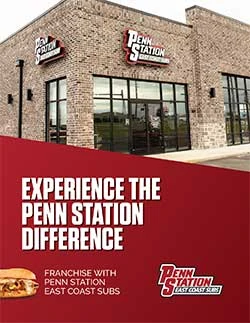In an era where convenience meets quality, the fast-casual restaurant franchise has emerged as one of the most dynamic and profitable segments in the foodservice industry.
With industry forecasts projecting the global fast casual restaurant franchise market to exceed $300 billion by 2030, entrepreneurs and investors are increasingly exploring this space. This guide will break down how the fast casual restaurant franchise business model works, what sets leading brands apart, and why the opportunity is more compelling than ever.
Understanding the Fast Casual Restaurant Business Model
Fast casual franchises combine the speed and efficiency of fast food with the quality and ambiance of casual dining. Positioned between quick service restaurants (QSRs) and sit-down establishments, these concepts typically offer:
- Made-to-order meals with fresh ingredients
- Moderate price points ($8–$15)
- Limited or counter service (no table waitstaff)
- Modern, streamlined interiors with digital ordering options
Take Penn Station East Coast Subs, for example. The brand emphasizes fresh-grilled subs, hand-cut fries, and open kitchen transparency, which are all hallmarks of fast casual dining. Industry data shows that food costs typically range from 28–35% of revenue, while labor accounts for about 25–35%, thanks to lean staffing models.
How to Stablish Support Systems That Facilitate Fast Casual Food Franchises
Fast casual franchise brands often distinguish themselves through robust support systems, including:
- Comprehensive initial and ongoing training
- Centralized marketing and promotional tools
- Streamlined supply chains with negotiated vendor pricing
- Operations manuals and field support to maintain quality control
This infrastructure makes fast casual dining franchise investment attractive, even for those new to the industry.
What are the Financial Costs, Revenue Streams, and Profit Margins
Investing in a fast-casual franchise typically involves an initial investment ranging from $200,000 to $800,000, depending on the brand and market. Key cost categories include:
- Franchise fees and royalties (4–7% of revenue)
- Build-out and equipment
- Food and labor
Revenue streams often span dine-in, takeout, and third-party delivery. AUV (Average Unit Volume) for some top-performing brands can exceed $1 million, with EBITDA margins typically falling between 12–20%.
Fast casual franchise profit margins often outperform traditional full-service restaurants due to higher table turnover and lower staffing costs. Many brands also offer multi-unit incentives for investors seeking scale.
Also read:
How to finance your franchise?
How to Select a Strategic Location for a Fast Casual Restaurant Franchise
Winning in the fast casual space means picking the right site. Key factors include:
- High foot traffic (urban centers, college towns, transit hubs, etc.)
- Visibility and ease of access
- Co-tenancy with complementary businesses (e.g., gyms, office parks)
- Demographics aligned with core customer base (millennials, young professionals)
Franchisors typically offer real estate assistance and site vetting tools to support franchisees.
How to Lead a Fast Casual Franchise to Achieve Brand Differentiation?

Brand differentiation in the fast casual world often centers around menu innovation, service experience, and digital capabilities. Consider:
- Sweetgreen: A data-driven salad chain appealing to health-conscious millennials, offering frictionless digital ordering and loyalty integrations.
- Shake Shack: Focused on gourmet fast food with high-quality sourcing, plus sleek interior design and limited table service.
- Penn Station: Recognized for its highly craveable menu items, Penn Station is celebrated franchise for its hot grilled sandwiches, inherent customizability, strong franchisee support, and competitive investment-to-revenue ratio. Each of these fast casual restaurant systems leverages their brands’ strengths and operational models to stand out in a competitive field.
What is the ideal Profile for a Fast Casual Restaurant Franchise Owner
Ideal candidates for owning a fast casual restaurant franchise include:
- Professionals with managerial, restaurant, or retail experience
- Investors with access to $250K+ in liquid capital
- Owners willing to be actively involved, especially during early operations
- Entrepreneurs looking to expand their portfolios through multi-unit growth
The fast casual restaurant business model often rewards those who value consistency, operating acumen, and team management.
What Technology Platforms are Responsible for Driving Growth in the Fast Casual Franchise Market?
Fast casual brands embrace technology to streamline operations and improve customer engagement. Common tools include:
- POS systems with real-time analytics
- Online and app-based ordering
- Kitchen display systems and automated prep tracking
- Third-party delivery platform integration
The emphasis on tech improves speed, accuracy, and labor efficiency while enhancing the guest experience.
Market Trends & 2025 Outlook
The fast casual franchise market analysis shows continued growth driven by:
- Younger demographics valuing quality, speed, and sustainability
- The preference for takeout and the sustainability of digital ordering is now a visible trend.
- While takeout remains a strong trend across the industry, and digital ordering continues to grow, in-restaurant ordering still accounts for over 60% of orders at Penn Station. Even though the majority of both in-store and digital orders are for takeout, digital channels still represent less than 40% of total orders.
- Automation and AI adoption are reducing labor dependency
Experts predict that fast casual will account for an increasing share of limited-service restaurant growth through 2025, as QSRs flatten and full-service struggle with cost pressures.
Final Thoughts
For entrepreneurs and investors, the fast-casual restaurant franchise model offers a powerful blend of profit potential, brand support, and scalability. From understanding the business model to evaluating profit margins and market trends, the key is to align with a concept that reflects both your investment capacity and your passion for quality dining.
Interested in exploring fast-casual dining franchise investment opportunities? Learn more about Penn Station’s franchise program today.




